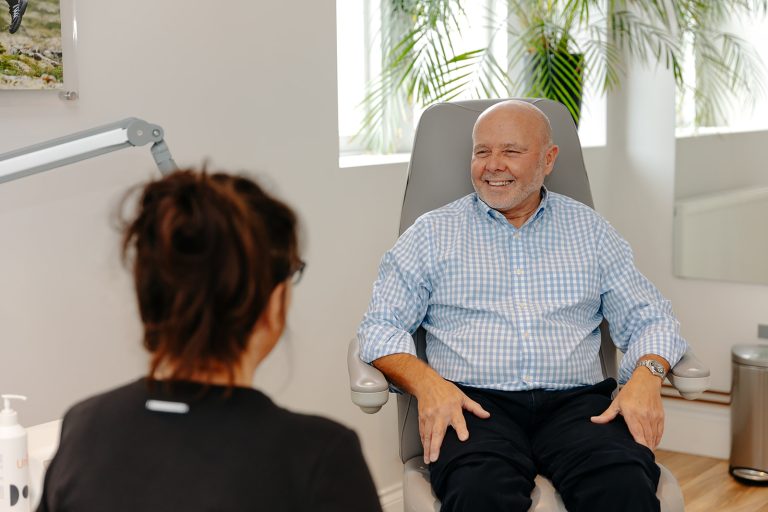Steph Hatt
March 22, 2018

Shoulder physiotherapy
Are you struggling with persistent shoulder pain that’s limiting your range of motion and affecting your daily activities?
A shoulder physiotherapist understands the pain and discomfort shoulder pain can cause. With targeted shoulder pain treatment, their primary goal is to help you achieve long-term pain relief.
Our dedicated team of skilled shoulder physiotherapists specialise in the diagnosis and treatment of shoulder pain, tailoring our approach to address your individual needs effectively.
Are you:
Ready to take the first step toward pain-free living and improved mobility?
Book your appointment today and discover the difference expert shoulder pain treatment can make in your life.

Devizes
Visit a shoulder physiotherapist at our Devizes clinic in Couch Lane.

Visit a shoulder physiotherapist at our Frome clinic in Wallbridge

Visit a shoulder physiotherapist at our Marlborough clinic in Hughenden Yard.


Shoulder pain can affect anyone at any stage in life but has the highest prevalence in athletes, manual labourers, office workers, and older adults.
Shoulder pain can have various causes, and the specific reason for the pain will depend on factors such as age, lifestyle, activity level, and underlying health conditions. Some common causes of shoulder pain include rotator cuff injuries, bursitis, tendinitis, frozen shoulder, shoulder impingement, arthritis, fractures, torn labrum, nerve compression, cervical spine issues, or overuse and repetitive strain.
As a general rule of thumb, you can expect to feel a 60% improvement within the first week, an 80% improvement within one month, and a 90% improvement within 2 months, depending on your situation. However, it may take longer with more severe cases.
Find out more about our treatment options that can help with shoulder pain:
We’ll start by understanding your medical history
We’ll then identify what is causing your shoulder pain and give you a clear diagnosis
You’ll receive hands on treatment to relieve any stiffness, aches and pains in your shoulder
We’ll put together a personalised treatment plan to address your specific shoulder pain issues
You’ll receive ongoing support from our team to resolve your shoulder pain and prevent future injuries



Shoulder blade pain can often be relieved through various methods, such as:
– Resting and avoiding activities that aggravate the pain
– Applying ice or heat to the affected area
– Doing gentle stretches and exercises to improve flexibility and strength
– Getting a massage or seeing a physical therapist for professional help
– Taking over-the-counter pain medication as recommended by a doctor
– Practicing good posture and ergonomics to prevent future pain
– Using a shoulder brace or support to alleviate discomfort
Shoulder pain can be caused by a number of factors, including Poor posture, overuse, repetitive movements, muscle strain, tendonitis, bursitis, arthritis, rotator cuff injuries, shoulder impingement, fractures, dislocations, or even referred pain from other areas of the body.
If you are experiencing shoulder pain while trying to sleep, here are some tips that may help:
– Try sleeping on your back with a pillow under your neck and another pillow under your affected shoulder for support.
– If sleeping on your back is uncomfortable, try sleeping on your side with a pillow between your knees to keep your spine aligned.
– Avoid sleeping on your stomach, as this can exacerbate shoulder pain.
– Use a supportive mattress and pillows to help alleviate pressure on your shoulders.
– Consider using a shoulder support pillow or brace to help keep your shoulder in a comfortable position while you sleep.
– If the pain persists, consult with a healthcare professional for further advice and treatment options.
Shoulder bursitis pain is typically felt in the front of the shoulder and may also radiate down the arm. It is commonly described as a dull ache or a sharp catching pain. It can also cause pain and stiffness when lifting or moving the arm.
Shoulder blade pain can be a symptom of various conditions, including muscle strain, injury, or poor posture. However, it can also be a potential sign of cancer, such as lung, breast, or bone cancer. But in most cases, shoulder blade pain is not a cause for immediate concern and can often be alleviated with simple treatments. You should Therefore seek Professional help to obtain a proper medical diagnosis
Frozen shoulder, also known as adhesive capsulitis, can be very painful. It is a condition where the shoulder joint becomes stiff and painful, making it difficult to move the arm. The pain can range from mild to severe and can be persistent. Treatment options may include physical therapy, medication, or in severe cases, surgery (although very rare).
Shoulder pain can sometimes radiate to the chest, causing chest pain. This is known as referred pain, where pain is felt in a different area than where the actual issue is located. It can also be due to muscle strain, nerve compression, or other underlying conditions. Consult with a healthcare professional to determine the cause of your pain and receive proper treatment.
It is important to listen to your body and consult with a healthcare professional before continuing to workout with shoulder pain. Depending on the severity of the pain, it may be best to modify your exercises, focus on lower body workouts, or give your shoulder proper rest and rehabilitation. It’s always best to prioritise your health and safety when it comes to exercising with pain.